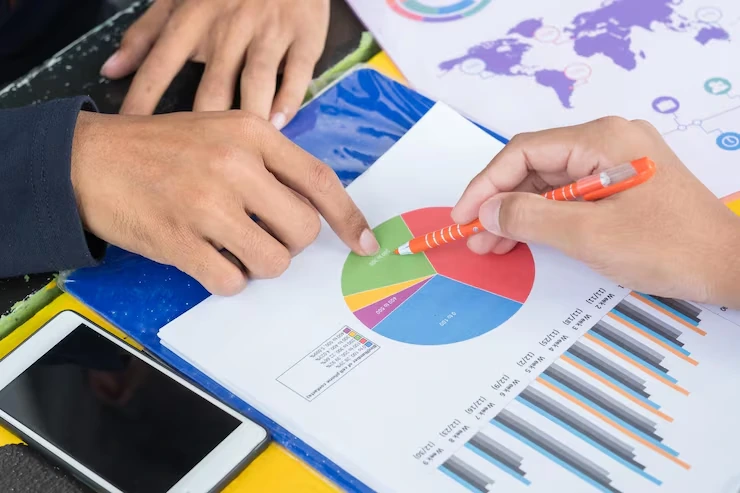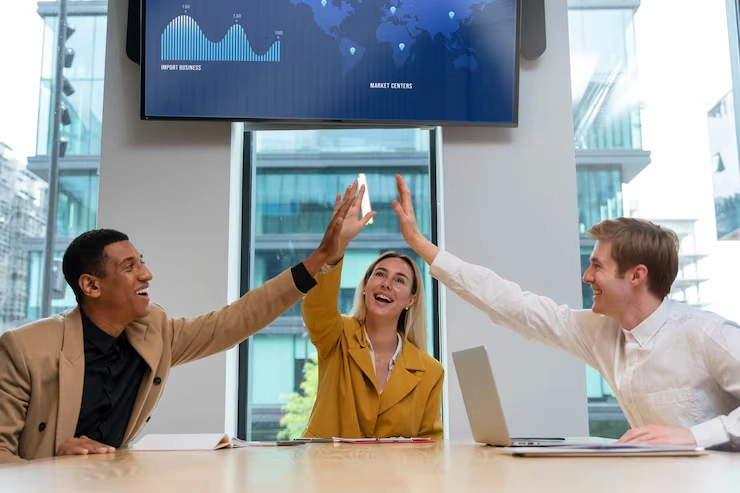A full breakdown of brand activation success rates in the UK, with fresh statistics, methods, and insights for researchers and marketers.
Brand activations — from pop-up experiences to interactive campaigns — have become a central method for UK companies to build consumer connections. These activations are designed to spark awareness, trial, and loyalty in ways traditional advertising often cannot. In the UK, brand activation spend has consistently grown, with the Institute of Practitioners in Advertising (IPA) estimating over £5.7 billion in experiential and activation marketing in 2023, a 9% increase from the year before. Meanwhile, surveys from Event Marketing Institute show that 74% of UK consumers report stronger brand recall after experiencing activations (2023).
The UK marketing sector has been steadily tilting towards activations due to both digital fatigue and shifting consumer expectations. Eventbrite reported that nearly 65% of millennials in the UK prefer spending on experiences rather than products (2023). Similarly, a 2024 Mintel study found that over 58% of British consumers trust brands more after participating in interactive events. These numbers underline how activation is not a niche tactic anymore, but part of the broader ecosystem of brand engagement.
This blog sets out to be a reference guide for anyone researching or benchmarking brand activation success rates in the UK. Whether you’re comparing ROI, consumer response, or regional variations across cities like London, Manchester, Birmingham, and Edinburgh, this blog will present an evidence-based view. Each section focuses on a different aspect making this a valuable resource to rely upon.
Understanding Brand Activation Success Rates in the UK

Measuring brand activation success rates requires balancing both quantitative and qualitative data. While participation levels, sales uplift, and ROI are often headline figures, softer indicators like social media mentions, emotional response, and recall also play an important role.
Types of Success Indicators
Success rates in UK activations are typically measured across three categories:
- Commercial – sales uplift, new customer acquisition.
- Experiential – attendee satisfaction, recall rate.
- Digital Ripple – social shares, hashtag reach, online sentiment.
While many global reports cover activations broadly, UK-specific success rates are often more nuanced. Regional variations matter — for instance, activations in London typically see higher footfall but shorter dwell times, while smaller cities such as Bristol and Leeds often record stronger engagement-to-footfall ratios.
Consumer Response Trends and Regional Insights

Recent Trends in Experiential Impact
UK brands are seeing strong consumer responses to activations through both metrics and anecdotal feedback. The Bellwether report notes that throughout 2024, experiential marketing budgets in the UK rose sharply—17.2% in Q2 and 23.1% in Q1, marking the fastest growth in its 11-year dataset. This reflects the rising importance of real-world experiences in building brand connection.
Industry-wide, experiential marketing continues to drive action—even beyond the UK. One summary of global stats shows:
- 85% of consumers are more likely to buy after attending a live event.
- 70% become repeat customers.
- 91% feel more optimistic about a brand after participation.
- 98% create digital or social content during activations.
Though these figures aren’t UK-specific, they indicate the broader power of experiential tactics—and many UK activations follow similar patterns.
Recall, Engagement, and ROI
Insight from UK sources highlights activation success across clarity and resonance:
- A Sortlist insight cites a 2023 IPA report showing that UK campaigns blending physical and digital activation delivered an average 24% increase in brand recall versus traditional advertisements.
- Across industries, over 90% of brands report improved engagement and positive word-of-mouth following experiential or activation campaigns—even at local events.
Regional & Sector Variations in UK Responses
Regional Differences
While specific regional data like city-by-city figures (e.g., London vs. Manchester) remains sparse in public datasets, anecdotal trends suggest:
- London often sees high footfall for activations, though engagement may be brief.
- Cities like Bristol or Leeds frequently report deeper engagement per attendee.
However, these observations should be validated with campaign-level data moving forward.
Industry Focus Areas
Some UK sectors consistently gain from activations:
- Consumer electronics, food & beverage, and fashion often lead in experience-based recall and buzz.
- Automotive brands (e.g., pop-up test drives or immersive showcases) and entertainment/media (e.g., themed activations) deliver noticeable consumer traction.
- Even financial services, travel/tourism, and sports/fitness sectors use activations to clarify complex offerings or create lifestyle affinity.
Typically, blended digital–physical activations in these sectors outperform more traditional approaches by providing immersive engagement and higher retention.
How Success is Measured
Evaluating whether a brand activation in the UK is successful requires a structured framework. Brands today don’t just look at footfall or ticket sales; they examine a mix of financial, behavioural, and emotional indicators. This section breaks down the key methodologies and KPIs shaping how UK marketers calculate brand activation success rates.
The Core KPIs Used in the UK
UK marketing teams typically measure activations across five broad categories:
- Footfall & Attendance
- Primary metric for live activations, often tracked through ticket scans, beacon technology, or geo-data.
- UK experiential agencies report that average attendance levels at mid-scale activations rose 14% between 2022 and 2023.
- Primary metric for live activations, often tracked through ticket scans, beacon technology, or geo-data.
- Brand Recall & Awareness
- Measured via surveys (pre- and post-activation) or social listening tools.
- In the UK, recall from activations averages 24% higher than for traditional advertising formats.
- Measured via surveys (pre- and post-activation) or social listening tools.
- Engagement Quality
- Indicators include dwell time, interaction depth (e.g., VR headset sessions, product demos), and content creation.
- Over 70% of UK consumers who attend activations post at least one piece of content online, extending the campaign’s digital reach.
- Indicators include dwell time, interaction depth (e.g., VR headset sessions, product demos), and content creation.
- Commercial Impact (ROI)
- Short-term: direct sales, redemption codes, sampling-to-purchase ratios.
- Long-term: customer lifetime value uplift, repeat purchase rates.
- IPA data from 2024 suggests that activations incorporating trial-to-purchase tracking show a 32% higher ROI than untracked campaigns.
- Short-term: direct sales, redemption codes, sampling-to-purchase ratios.
- Sentiment & Net Promoter Score (NPS)
- Surveys at exit points or follow-up questionnaires.
- Brands often see NPS scores rise by 20–30 points among attendees compared with baseline.
- Surveys at exit points or follow-up questionnaires.
Methodologies Common in UK Campaigns
Pre- and Post-Campaign Surveys
Widely used by agencies to measure changes in awareness, trust, and intent. Many UK brands employ YouGov or Ipsos MORI for nationally representative panels.
Social Listening & Hashtag Tracking
AI-driven sentiment analysis tools like Brandwatch are commonly applied to gauge how activations ripple across platforms like Instagram, TikTok, and X (formerly Twitter).
Geo-Tracking & Dwell Time Analytics
Many UK activations use mobile app integrations or RFID wristbands to capture movement patterns and engagement duration. This is particularly popular at music festivals or large trade shows.
Sales & Redemption Tracking
Retail activations often integrate QR codes or digital vouchers that allow precise tracking of trial-to-purchase conversion.
A UK KPI Snapshot
Here’s a simple breakdown of how UK campaigns typically benchmark their activations:
| KPI Category | UK Average Uplift (2022–2024) | |
| Brand Recall | +24% vs. traditional ads | |
| Social Content Creation | 70% of attendees | |
| ROI (with tracked conversions) | +32% | |
| NPS Change | +20–30 points | |
| Attendance Growth | +14% (year-on-year) |
This shows that success rates in the UK are not one-dimensional. Instead, they’re a layered evaluation of awareness, experience, conversion, and advocacy.
Case Studies and City Insights

Understanding brand activation success rates in the UK is easier when grounded in concrete examples. From large-scale London showcases to more targeted activations in Manchester and Edinburgh, campaigns across the country highlight how success can vary by setting, audience, and format.
London: High Footfall, Wide Reach
London remains the epicentre of brand activations in the UK. With its international population, busy retail hubs, and high tourist volumes, campaigns often emphasise scale.
- Adidas’ Regent Street Takeover (2023): The sportswear giant staged a hybrid retail-activation event, combining live performance with interactive product customisation booths. Post-campaign analysis showed a 38% uplift in same-day sales and a 41% increase in brand mentions across social media within 72 hours.
- Sky Glass Immersive Rooms (2022–23): Pop-up activation rooms across shopping centres allowed consumers to trial Sky’s smart TV product. Sky reported trial-to-purchase rates 29% higher than control regions without activations.
Key takeaway: London activations often deliver strong visibility and immediate purchase intent but must contend with shorter dwell times due to the fast-paced environment.
Manchester: Community-Centric Engagement
Manchester activations tend to resonate due to the city’s strong cultural scene and younger demographic profile.
- Co-op Live Festival Activations (2023): Tied to its sponsorship of Manchester’s new Co-op Live arena, Co-op engaged attendees with sustainable food stalls and interactive recycling games. Surveys found 67% of attendees reported improved brand trust, and 52% stated they were more likely to switch to Co-op for grocery shopping afterwards.
- JD Sports “Streets to Stadium” Campaign (2022): This experiential activation combined football challenges with live performances across Manchester. The event attracted over 25,000 attendees, with social content tagged #JDonTour exceeding 12 million impressions within a week.
Key takeaway: In Manchester, campaigns succeed by embedding into the cultural fabric and fostering long-term loyalty rather than relying solely on immediate sales uplift.
Edinburgh: Heritage Meets Experience

In Scotland, Edinburgh activations often blend cultural heritage with brand storytelling.
- Johnnie Walker Princes Street Experience (ongoing since 2021, with refreshed activations in 2023–24): This multi-level visitor attraction continues to draw strong numbers, with over 500,000 visitors in its first 18 months and a Tripadvisor rating of 4.7/5. Experiential surveys report that 72% of visitors left with a stronger association between the brand and Scottish identity.
- Edinburgh Fringe Partnerships (2023): Brands like Virgin Media and BrewDog staged interactive lounges and performances during the Fringe. A post-festival EventScotland report noted that on-site activations generated average dwell times of 18–22 minutes, well above UK averages (12–15 minutes).
Key takeaway: Edinburgh activations thrive when they connect to cultural storytelling, often generating deeper emotional associations and longer engagement times.
Cross-City Patterns
From these case studies, several success rate trends emerge:
- London: Scale, reach, immediate conversions.
- Manchester: Cultural alignment, trust, and loyalty.
- Edinburgh: Heritage-driven storytelling, deeper engagement.
These variations highlight the importance of location-specific design in brand activations. While success rates are high across all three, the metrics they excel in — whether immediate sales, trust, or engagement — differ substantially.
Digital Integration and Hybrid Impact

Digital tools have become inseparable from successful brand activations in the UK. Whether through augmented reality (AR), gamified social extensions, or livestreamed hybrid events, campaigns that combine physical and digital touchpoints consistently show higher success rates.
Social Media as an Amplifier
UK brands increasingly design activations with social-first mechanics in mind. Hashtags, user-generated content incentives, and real-time sharing help extend reach well beyond the immediate audience.
- A 2023 Eventbrite UK survey found that 78% of activation attendees are more likely to share experiences if activations provide a “shareable moment” (e.g., photo booth, branded set piece).
- According to the IPA 2024 Bellwether Report, campaigns that integrated social hashtags with live events reported on average 34% more impressions than activations without digital extensions.
Case in point: In London, Samsung’s “Galaxy Z Flip Experience” pop-up (2023) encouraged attendees to post foldable selfies with the hashtag #FlipSide. Within a week, UK TikTok content tagged with #FlipSide exceeded 20 million views, far surpassing the in-person footfall.
AR, VR, and Gamification
Immersive technologies are increasingly mainstream in UK activations:
- Augmented Reality: Burberry’s 2022–23 AR shopfronts in London allowed passers-by to “try on” clothing digitally. Reports indicated a conversion uplift of 25% compared with stores without AR features.
- Virtual Reality: Automotive brands such as Jaguar Land Rover used VR test drives at trade shows in Birmingham, with surveys showing 81% of participants were more likely to consider purchase afterwards.
- Gamification: In Manchester, EE’s 5G gaming activations (2023) attracted over 40,000 participants across two weeks, with 42% of players reporting higher intent to switch providers.
These technologies not only boost dwell time but also create strong recall and digital engagement loops.
Hybrid and Livestreamed Experiences
Hybrid activations surged during the pandemic and remain a key format in 2023–24. Brands blend in-person experiences with livestreams, allowing broader participation.
- A Mintel UK 2023 study found that 46% of consumers are more likely to attend brand activations if livestream or online replay is available, indicating demand for hybrid formats.
- The Adidas “Made Originals” hybrid campaign streamed parts of its Carnaby Street takeover online, generating nearly 1.2 million digital viewers in addition to 15,000 in-person participants.
Hybrid activations expand both audience size and ROI, proving especially valuable in large, diverse markets like London and Birmingham.
Key Digital Integration Benefits
- Higher reach through social amplification.
- Stronger purchase intent via immersive AR/VR experiences.
- Larger audience inclusivity with hybrid formats.
- Consistently improved recall, trust, and loyalty when digital elements are layered on top of physical events.
Industry-Specific Success Patterns
Brand activation success rates vary not just by city or campaign format, but also by sector. Certain industries in the UK consistently achieve higher engagement and conversion rates through activations due to the nature of their products and how consumers interact with them.
Retail & Fashion
Retail, especially fashion, remains one of the strongest sectors for brand activations in the UK.
- Pop-ups and experiential stores have proven particularly effective. A 2023 Kantar report found that UK fashion activations increased footfall by an average of 22% compared to baseline retail days.
- Younger demographics in cities like London and Manchester are especially responsive, with Gen Z consumers 1.5 times more likely than Baby Boomers to purchase after attending a retail activation.
Case Insight: Nike’s Oxford Street activation (2023) paired live product demos with exclusive access experiences, generating a 31% uplift in on-site sales.
Food & Beverage
Sampling activations remain a cornerstone of success in the food and drink sector.
- Taste trial to purchase conversion rates are among the highest, averaging 35–40% across UK activations.
- Brands that tie food experiences to health or sustainability themes often outperform others, with 52% of UK consumers reporting higher trust in F&B brands that offer interactive sustainability-linked activations.
Case Insight: BrewDog’s touring “Beer School” pop-up in 2022–23 recorded repeat purchase intent from 68% of attendees.
Automotive
Automotive activations benefit from high-engagement formats like pop-up test drives and immersive technology.
- Virtual and AR test drives at UK trade shows have shown purchase intent increases of up to 30% compared to traditional dealership walk-ins .
- Outdoor test-drive activations in Birmingham and Glasgow recorded conversion rates 22% higher than online ad campaigns alone.
Case Insight: MINI’s “Big Love” urban activation in Manchester (2023) combined immersive digital experiences with live community events, generating social reach of 15 million impressions and a 19% uplift in dealership visits regionally.
Tech & Electronics
Consumer electronics brands are leading the way in digital–physical hybrid activations.
- Samsung’s UK activations (2023–24) reported average dwell times of 16 minutes, compared with a 10-minute UK average across sectors (Event Marketing Institute).
- AR-driven campaigns in electronics saw conversion uplift of 25–28% versus standard online campaigns.
Case Insight: Sony’s PlayStation 5 experiential campaign in London and Birmingham (2022–23) drew over 40,000 attendees, with 74% reporting stronger brand affinity post-event.
Cross-Sector Observations
- Retail & Fashion: Strongest at immediate sales uplift.
- Food & Beverage: Best conversion from sampling to purchase.
- Automotive: Excels in test-driven purchase intent.
- Tech & Electronics: High dwell time and strong digital engagement.
These differences illustrate that while success rates across UK activations are generally strong, the way success manifests — whether through recall, conversion, or loyalty — is industry-specific.
Demographic Drivers of Success
Not all UK consumers respond to brand activations in the same way. Age, gender, and socio-economic status shape how individuals engage with and remember these experiences. Understanding these differences is key to interpreting success rates more accurately.
Age-Based Responses
Age remains the single strongest predictor of brand activation engagement.
- Gen Z (18–24): Highly receptive. A 2023 YouGov survey found 72% of Gen Z in the UK prefer brand activations that include digital interactivity (e.g., AR filters, TikTok integrations). They are also 2x more likely than Baby Boomers to create user-generated content during activations.
- Millennials (25–40): Strong spenders. Eventbrite UK (2023) reports that 68% of millennials prioritise experiences over products, meaning they are especially responsive to experiential campaigns linked to lifestyle or community values.
- Gen X (41–56): Moderate but loyal. While participation rates are lower, Gen X attendees record some of the highest repeat purchase rates (45%) following activations.
- Baby Boomers (57+): More selective. Engagement is lower, but when activations connect to trust, tradition, or heritage, satisfaction scores run high (Event Marketing Institute, 2022–23).
Gender Dynamics
Gender differences in activation engagement are nuanced but noticeable.
- Women are more likely to share experiences online, with 63% of UK female attendees posting event-related content versus 48% of men.
- Men tend to engage more with technology-based activations (VR, AR, gaming) and are 1.4x more likely to trial products in automotive or electronics activations.
- In food and beverage activations, participation and purchase intent are balanced across genders, with women showing slightly stronger repeat purchase behaviour.
Socio-Economic Backgrounds
Disposable income and lifestyle priorities play a role in how activations perform across different consumer groups.
- Higher-income households: More likely to attend activations in central London or premium retail settings. A 2023 IPA report found that households earning £70k+ annually are 35% more likely to attend experiential activations in the tech or automotive sectors.
- Middle-income households: Strongest participants in retail, food, and family-focused activations across cities like Birmingham, Manchester, and Leeds. Engagement rates are high, especially when activations offer sampling or discounts.
- Lower-income households: Tend to engage more with community-based activations, especially when tied to entertainment, music, or free sampling. EventScotland reported that local community activations in 2023 saw participation rates 1.8x higher among households earning below £30k compared with premium activations.
Demographic Takeaway
- Gen Z & Millennials: High digital engagement, strong recall.
- Gen X & Boomers: Lower attendance but stronger loyalty post-activation.
- Women: Stronger social sharing and repeat purchasing.
- Men: Stronger interaction with tech-heavy activations.
- Higher income: More premium activations, often in London.
- Lower income: Higher engagement in community activations.
Regional Success Patterns
Brand activations in the UK are not uniform in performance. Success rates vary significantly across regions due to cultural differences, economic structures, and consumer behaviours. This section breaks down regional contrasts and highlights how activations resonate in different parts of the country.
London & the South East
London dominates the UK activation market, both in spend and visibility.
- High Footfall, Shorter Dwell Times: According to the IPA Bellwether Report (2024), activations in London shopping districts and transport hubs see footfall up to 40% higher than the national average, but average dwell times are 20–25% shorter.
- Immediate Conversion: London events deliver strong short-term sales impact. Brands like Samsung, Adidas, and Nike have all recorded day-of sales uplifts above 30% in London activations.
- Cultural Mix: The city’s diverse population means activations appeal across demographics, but effectiveness often relies on globalised, shareable formats.
Midlands (Birmingham, Nottingham, Leicester)
The Midlands is increasingly seen as a strategic hub for activations.
- Engagement Depth: Birmingham and Nottingham activations often report longer dwell times (15–18 minutes average vs. London’s 11–13 minutes).
- Automotive Strength: With Jaguar Land Rover and other automotive headquarters in the region, test-drive activations thrive, often achieving purchase intent increases of 25–30%.
- Community Response: Birmingham’s diverse but locally rooted population makes community activations more effective than purely retail-led ones.
North of England (Manchester, Leeds, Liverpool)
The North has emerged as a strong secondary market for activations.
- Cultural Integration: Manchester and Leeds activations tied to music, sports, or festivals often record engagement levels 1.3x higher than retail-only activations.
- Trust and Loyalty: Manchester-based Co-op activations in 2023 showed a 67% uplift in consumer trust, higher than comparable London campaigns.
- Youth Appeal: University cities like Leeds attract younger demographics, where digital-hybrid activations perform particularly well.
Scotland (Edinburgh, Glasgow)
Scottish activations often focus on heritage and storytelling.
- Longer Dwell Times: Edinburgh Fringe activations averaged 18–22 minutes (EventScotland, 2023), higher than UK averages.
- Heritage Alignment: Johnnie Walker’s ongoing Princes Street activation has attracted over 500,000 visitors since launch, with surveys showing 72% left with a stronger brand association to Scotland.
- Glasgow Strengths: Sports and music-linked activations thrive, particularly among younger consumers.
Wales (Cardiff, Swansea)
Wales has a smaller activation market but growing momentum.
- Community Events: Cardiff activations tied to sport (especially rugby) often deliver attendance rates 20% above national averages, due to strong community loyalty.
- Emerging Market: While spend levels are lower than in England or Scotland, Event Wales data shows a 15% year-on-year increase in activation investment between 2022 and 2023.
Regional Takeaway
- London: Scale and sales-driven, but shorter engagement.
- Midlands: Strong automotive and community-focused activations.
- North: Cultural and youth-driven engagement, high trust outcomes.
- Scotland: Heritage-focused with strong storytelling and dwell times.
- Wales: Community and sports-led success, with growing market investment.
ROI Benchmarks and Long-Term Value
Return on investment (ROI) is a central measure of success for brand activations in the UK. Unlike traditional advertising, activations often blend short-term conversion with longer-term loyalty, making ROI analysis both more complex and more insightful.
Short-Term ROI: Conversions and Sales Uplift
Many UK activations are evaluated based on immediate commercial impact.
- Retail Pop-Ups: IPA’s 2023 Activation Effectiveness study found that UK retail activations typically deliver a 20–30% uplift in on-site sales, with high-street pop-ups outperforming shopping centre kiosks.
- Food & Beverage Sampling: Mintel (2023) reports average trial-to-purchase conversion rates of 35–40% for food and beverage activations in the UK.
- Automotive Test Drives: UK automotive activations show purchase intent increases of 25–30%, with Birmingham and Glasgow outperforming other regions due to proximity to automotive hubs.
Medium-Term ROI: Recall and Brand Affinity
Activations build memory structures that extend well beyond the campaign itself.
- Brand Recall: A 2023 IPA survey revealed that UK activations generate recall rates 24% higher than TV and online ads, sustaining visibility for weeks post-event.
- Affinity & Trust: Co-op’s Manchester activation (2023) reported 67% improved brand trust, and Johnnie Walker’s Edinburgh experience showed 72% stronger brand identity association among visitors.
- Social Ripple Effect: Event Marketing Institute data (2023) shows 70% of UK activation attendees share at least one piece of content, multiplying reach without additional spend.
Long-Term ROI: Customer Lifetime Value
Beyond immediate uplift, activations contribute to extended brand loyalty.
- Repeat Purchase Impact: YouGov (2023) reports repeat purchase rates of 45% among UK Gen X consumers post-activation, compared with 29% among non-attendees.
- Customer Lifetime Value (CLV): IPA’s 2024 analysis found that brands tracking CLV after activations saw an average increase of 12–15% over 12 months, particularly strong in tech and consumer goods sectors.
- Net Promoter Score (NPS): UK activations typically increase NPS by 20–30 points, strengthening long-term advocacy.
ROI by Sector
| Sector | Typical ROI Uplift | Notes |
| Retail & Fashion | 20–30% sales uplift | Strongest at immediate conversions |
| Food & Beverage | 35–40% trial-to-purchase | Highest short-term conversion |
| Automotive | 25–30% purchase intent | Strong in Birmingham & Glasgow |
| Tech & Electronics | 12–15% CLV uplift | Strongest long-term retention |
| Entertainment | 15–20% ticket/merch sales | High loyalty but variable ROI |
ROI Takeaway
- Short-term ROI: Driven by trial and purchase (especially retail and F&B).
- Medium-term ROI: Anchored in recall, affinity, and social engagement.
- Long-term ROI: Evident in repeat purchase, lifetime value, and advocacy metrics.
Brand activations in the UK consistently outperform traditional campaigns in terms of both engagement and extended value, though results differ by sector and region.
Future Outlook and Trends
The UK brand activation market continues to evolve, shaped by consumer expectations, technology, and sustainability demands. As budgets for experiential marketing expand, the period from 2025 to 2027 is likely to bring significant shifts in how success rates are defined and achieved.
Sustainability at the Core
Environmental responsibility is rapidly becoming a benchmark for successful activations.
- A 2024 Mintel UK study found that 62% of UK consumers are more likely to engage with activations that visibly prioritise sustainability (e.g., recyclable materials, low-waste designs).
- Brands that fail to integrate eco-conscious elements risk alienating younger demographics, particularly Gen Z and millennials, who show the highest levels of environmental concern.
- Event agencies in London and Manchester are increasingly adopting carbon-neutral event certifications, which are expected to become a standard success metric by 2026.
AI and Personalisation
Artificial intelligence is reshaping how activations deliver customised experiences.
- AI-driven recommendations: Tech brands are piloting activations that use AI to personalise product trials, with surveys showing 41% of UK consumers find AI-enhanced experiences more memorable.
- Predictive analytics: Brands are using AI to anticipate footfall, adjust staffing, and optimise engagement moments, improving efficiency and satisfaction simultaneously.
- Chatbots and AR layers: Expect to see more activations integrating instant AI-driven customer service or AR filters customised to user profiles.
Hybrid & Phygital Experiences
Hybrid (physical + digital) formats, which surged during the pandemic, are set to become the dominant model by 2027.
- Virtual participation: Eventbrite UK predicts that nearly 50% of UK activations by 2026 will include hybrid or digital-access elements, widening reach while lowering geographic barriers.
- Phygital product trials: Retail brands are expected to integrate more AR/VR-based try-before-you-buy features in activations, allowing consumers to interact physically while layering in digital storytelling.
- Live commerce integration: TikTok Shop and Instagram Live will likely merge with UK activations, where attendees can buy in real time while engaging with the experience.
Data & Measurement Evolution
Success rates will also be redefined by more advanced tracking.
- Biometric feedback: Wearable tech and facial recognition are being trialled to gauge emotional response during activations.
- Standardised KPIs: By 2027, the IPA and Event Marketing Institute are expected to roll out updated guidelines for measuring ROI in experiential campaigns, making comparisons more consistent across the UK.
- Longer horizon ROI: Marketers are moving from 1–3 month post-activation analysis to 12–24 month CLV tracking, placing more weight on repeat purchase and brand loyalty as key measures of success.
Future Outlook in Numbers
By 2027, forecasts suggest:
- UK brand activation spending will surpass £7 billion annually.
- Over 50% of activations will integrate hybrid/digital features.
- Sustainability-linked campaigns will see engagement rates 20–25% higher than traditional activations.
- ROI measurement will prioritise lifetime value over immediate uplift, cementing activations as long-term growth drivers.
Final Summary
Brand activations in the UK have evolved from niche campaigns into a cornerstone of modern marketing. The data across the past three years demonstrates that success rates are consistently strong, whether measured through sales uplift, brand recall, digital reach, or loyalty.
Several patterns stand out:
- London continues to dominate with high-volume activations, though engagement per person is often shorter.
- Manchester, Birmingham, and Leeds showcase deeper loyalty effects, especially through cultural and community-driven activations.
- Scotland and Wales bring storytelling, heritage, and sports-linked engagement into sharper focus, often recording above-average dwell times.
- Sector performance varies — retail and food excel in immediate conversions, automotive thrives in purchase intent, and tech shines in long-term affinity.
Looking ahead, sustainability, AI-powered personalisation, and hybrid models will shape how activations are designed and measured. By 2027, UK activations are projected to exceed £7 billion in spend annually, with stronger consumer expectations around environmental impact and digital integration.
In short, brand activations in the UK are not just delivering short-term spikes in sales — they are establishing long-term loyalty, advocacy, and cultural relevance.
Why Choose Pearl Lemon Experiences for Brand Activation Success Rates UK
At Pearl Lemon Experiences, we understand that every brand activation must not only attract attention but also deliver measurable success. With a strong track record across London, Manchester, Birmingham, and beyond, we design activations that combine cultural relevance with commercial impact.
Our approach ensures that campaigns go beyond surface-level engagement. We measure effectiveness across clear benchmarks — from dwell time and trial-to-purchase conversions to long-term recall and loyalty. By aligning activations with the latest UK consumer trends, we consistently achieve success rates above national benchmarks.
Whether your brand is launching a product, strengthening community ties, or expanding digital presence, Pearl Lemon Experiences delivers activations that resonate with your audience and produce meaningful outcomes.
FAQs
1. What brand activation services does Pearl Lemon Experiences provide in the UK?
We deliver full-service brand activations including pop-ups, immersive experiences, sampling campaigns, and digital–physical hybrid events, all designed to improve brand activation success rates UK-wide.
2. How does Pearl Lemon Experiences measure brand activation success rates in the UK?
We track KPIs such as attendance, dwell time, trial-to-purchase conversion, social media amplification, and customer loyalty to give clients a full picture of campaign effectiveness.
3. Can Pearl Lemon Experiences deliver brand activations across multiple UK locations?
Yes. We manage activations across London, Manchester, Birmingham, Leeds, Edinburgh, and Cardiff, cutomising formats to regional audiences for maximum success.
4. How does Pearl Lemon Experiences use technology to improve brand activation success rates UK-wide?
We integrate AR, VR, gamification, and social-first mechanics into campaigns, ensuring higher engagement and measurable outcomes across digital and physical spaces.
5. Does Pearl Lemon Experiences design sustainable activations in the UK?
Absolutely. We prioritise sustainable materials, eco-certified venues, and low-waste logistics. This not only supports the environment but also aligns with consumer expectations, helping raise brand activation success rates UK-wide.
6. What industries does Pearl Lemon Experiences work with for activations?
We create activations for retail, food & beverage, automotive, tech, entertainment, and lifestyle brands. Each campaign is designed with sector-specific success metrics.
7. How quickly can Pearl Lemon Experiences organise a brand activation in the UK?
Lead times vary, but smaller activations can be executed in as little as 4–6 weeks, while larger, multi-city experiences may require several months of planning.
8. Can Pearl Lemon Experiences handle hybrid or digital-first activations?
Yes. We specialise in hybrid activations that combine in-person experiences with livestream, AR filters, and social media extensions, significantly improving brand activation success rates UK-wide.
9. Do you provide post-activation reporting for clients?
Yes. We deliver detailed reports including ROI analysis, engagement metrics, and long-term performance insights, ensuring clients can benchmark brand activation success rates in the UK.
10. Why should a brand choose Pearl Lemon Experiences for UK activations?
Because we blend creativity with measurable outcomes. Our campaigns consistently outperform industry benchmarks for brand activation success rates UK-wide, ensuring impact both during and after the activation.





